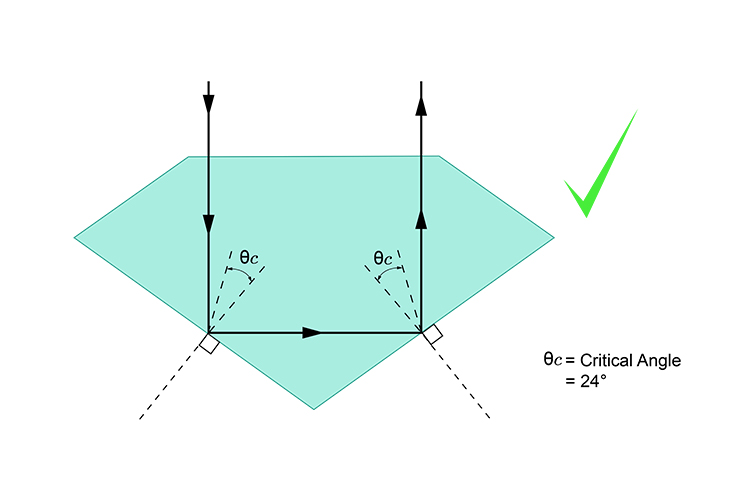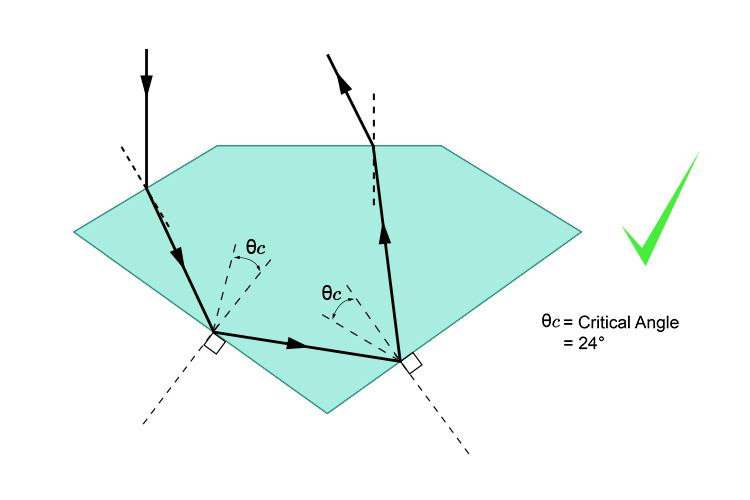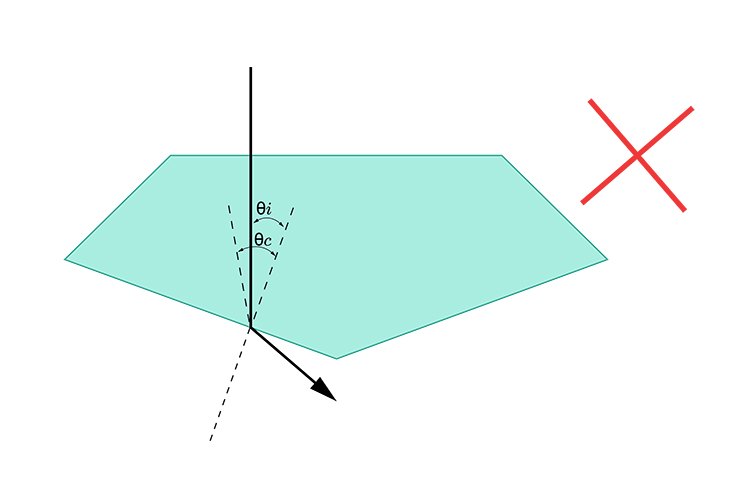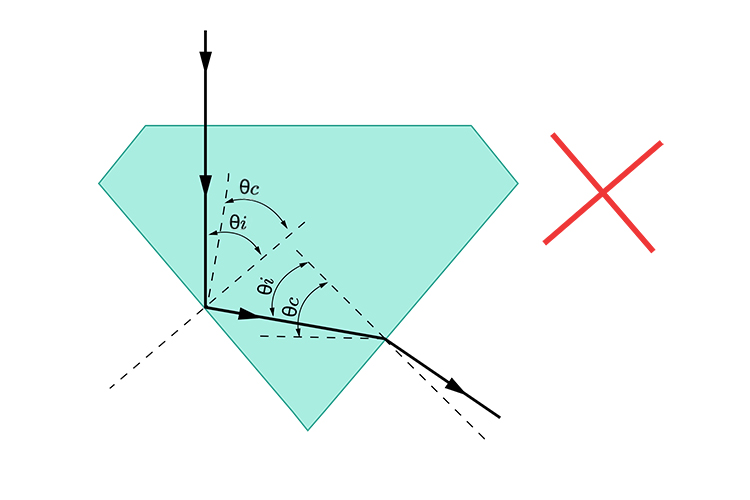Diamonds and total internal reflection
In 1919 Marcel Tolkowsky found that if a diamond was cut too deep or too shallow then light would escape out of the sides or the bottom of the diamond instead of reflecting back upwards through the top of the diamond.
He found that if the diamonds were cut at the correct angle to make use of total internal reflection, you could greatly improve their brilliance, fire and sparkle.
This understanding of total internal reflection has been used ever since when cutting diamonds.

The correct way to cut a diamond is such that all the light reflects back upwards. The angle of incidence must be greater than the critical angle to create total internal reflection.

Even from the sides the diamond, if cut correctly, can reflect the light upwards.

This diamond has been cut too shallow and much of the light is refracted out of the back of the diamond. The angle of incidence `(theta\i)` is less than the critical angle `(theta\c)`.

This diamond has been cut too deep and again most of the light refracts through the underside of the diamond. The angle of incidence `(theta\i)` is less than the critical angle `(theta\i)` as it refracts through the boundary of diamond to air.




